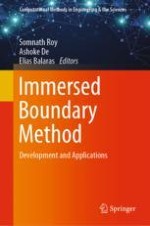2020 | OriginalPaper | Chapter
2. Direct Lagrangian Forcing Methods Based on Moving Least Squares
Authors : Marcos Vanella, Elias Balaras
Published in: Immersed Boundary Method
Publisher: Springer Singapore
Activate our intelligent search to find suitable subject content or patents.
Select sections of text to find matching patents with Artificial Intelligence. powered by
Select sections of text to find additional relevant content using AI-assisted search. powered by
